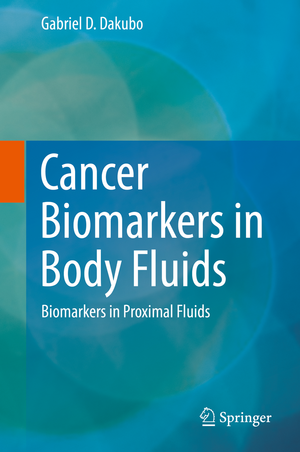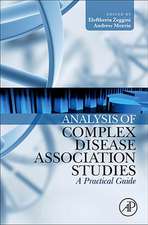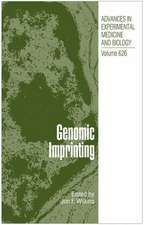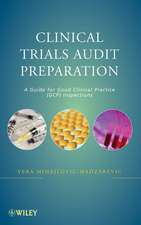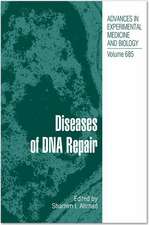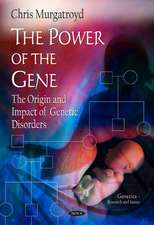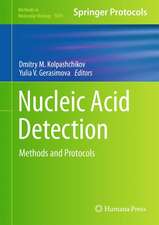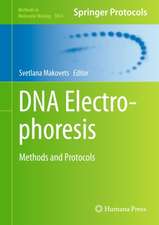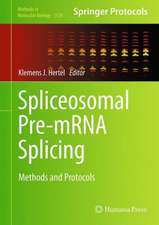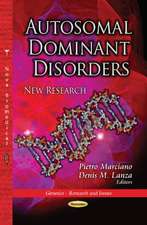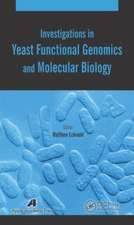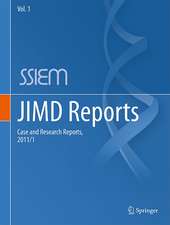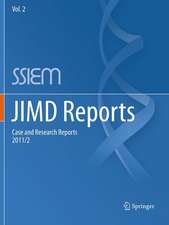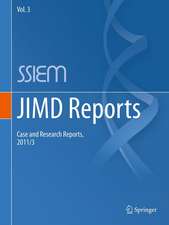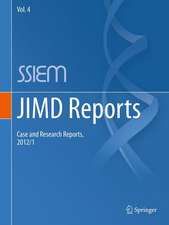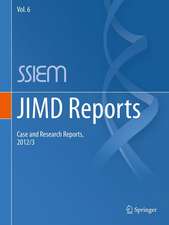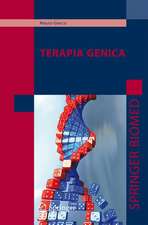Cancer Biomarkers in Body Fluids: Biomarkers in Proximal Fluids
Autor Gabriel D. Dakuboen Limba Engleză Hardback – 26 sep 2019
Chapter 1 examines the global burden of cancer and the need for regional efforts at primary prevention, early detection and patient care. Chapters 2-12 address tissue-specific biomarkers in associated body fluids. The tumor interstitial fluid as a microenvironment rich in cancer biomarkers is detailed in chapter 13, while chapter 14 looks at the human body fluid microbiome and its evolving role in cancer. Commercially available assays using proximal fluids are examined at the end of the respective chapters. This book complements its predecessors and is equally useful to oncologists, cancer researchers, clinicians, medical students, nurses, diagnostic laboratory and pharmaceutical industry personnel.
| Toate formatele și edițiile | Preț | Express |
|---|---|---|
| Paperback (2) | 1095.36 lei 6-8 săpt. | |
| Springer International Publishing – 8 iun 2018 | 1095.36 lei 6-8 săpt. | |
| Springer International Publishing – 4 iul 2018 | 1422.50 lei 6-8 săpt. | |
| Hardback (3) | 1099.35 lei 3-5 săpt. | |
| Springer International Publishing – 26 sep 2019 | 1099.35 lei 3-5 săpt. | |
| Springer International Publishing – 9 sep 2016 | 1102.31 lei 6-8 săpt. | |
| Springer International Publishing – 15 dec 2016 | 1429.80 lei 6-8 săpt. |
Preț: 1099.35 lei
Preț vechi: 1157.22 lei
-5% Nou
Puncte Express: 1649
Preț estimativ în valută:
210.43€ • 228.65$ • 176.87£
210.43€ • 228.65$ • 176.87£
Carte disponibilă
Livrare economică 31 martie-14 aprilie
Preluare comenzi: 021 569.72.76
Specificații
ISBN-13: 9783030247232
ISBN-10: 3030247236
Pagini: 290
Ilustrații: XXI, 296 p. 11 illus. in color.
Dimensiuni: 155 x 235 mm
Greutate: 0.54 kg
Ediția:1st ed. 2019
Editura: Springer International Publishing
Colecția Springer
Locul publicării:Cham, Switzerland
ISBN-10: 3030247236
Pagini: 290
Ilustrații: XXI, 296 p. 11 illus. in color.
Dimensiuni: 155 x 235 mm
Greutate: 0.54 kg
Ediția:1st ed. 2019
Editura: Springer International Publishing
Colecția Springer
Locul publicării:Cham, Switzerland
Cuprins
1. Melanoma Biomarkers in Exfoliated Cells.- 2. Head and Neck Cancer Biomarkers in Saliva.- 3. Lung Cancer Biomarkers in Lung Fluids.- 4. Breast Cancer Biomarkers in Breast Fluids.- 5. Gastric Cancer Biomarkers in Gastric Fluid.- 6. Colorectal Cancer Biomarkers in Stool.- 7. Hepatobiliary Cancer Biomarkers in Bile.- 8. Pancreatic Cancer Biomarkers in Pancreatic Juice.- 9. Renal Cancer Biomarkers in Urine.- 10. Bladder Cancer Biomarkers in Urine.- 11. Prostate Cancer Biomarkers in Prostatic Fluid.- 12. Testicular Cancer Biomarkers in Seminal Fluid.- 13. Ovarian Cancer Biomarkers in Peritoneal Fluid.- 14. Endometrial Cancer Biomarkers in Menstrual Fluid.- 15. Cervical and Vulvar Cancer Biomarkers in Exfoliated Cells.- 16. Brain Cancer Biomarkers in Cerebrospinal Fluid.- 17. Hematologic Cancer Biomarkers in Blood.- 18. The Body Fluid Microbiome and Cancer.- 19. Biomarkers in Interstitial Fluids of Cancer Cells.
Notă biografică
Dr. Gabriel D. Dakubo is an Assistant Professor of Molecular Medicine and Human Anatomy in the Division of Medical Sciences at the Northern Ontario School of Medicine. He received his BSc and MBChB degrees from the University of Ghana, followed by the pursuance of a Postdoctoral research fellowship in Molecular Medicine at the Ottawa Hospital Research Institute, Canada. Dr. Dakubo’s passion is in noninvasive deployment of biomarkers for cancer management. While an expert in mitochondrial genetic alterations in cancer, he also has a keen interest in the inter-genomic communications that occur in the cancer cell, as well as the Slaughter’s concept of field cancerization. Dr. Dakubo is well published, and is a reviewer of a number of esteemed journals, including Clinical Cancer Research.
Textul de pe ultima copertă
The ability to measure and monitor cancer biomarkers in “body fluid biopsy” should greatly impact oncologic practice. “Biomarkers in Proximal Fluids”, the third of the “Cancer Biomarkers in Body Fluids” series details cancer signatures in none or minimally circulating body fluids including saliva, sputum, bronchoalveolar lavage fluid, exhaled breath condensate, nipple aspirate fluid, gastric and pancreatic juice, stool, urine, and prostatic, peritoneal and cerebrospinal fluid. These fluids are enriched with biomarkers, especially those emanating from cells of the proximal tissue.
Chapter 1 examines the global burden of cancer and the need for regional efforts at primary prevention, early detection and patient care. Chapters 2-12 address tissue-specific biomarkers in associated body fluids. The tumor interstitial fluid as a microenvironment rich in cancer biomarkers is detailed in chapter 13, while chapter 14 looks at the human body fluid microbiome and its evolving role in cancer. Commercially available assays using proximal fluids are examined at the end of the respective chapters. This book complements its predecessors and is equally useful to oncologists, cancer researchers, clinicians, medical students, nurses, diagnostic laboratory and pharmaceutical industry personnel.
Chapter 1 examines the global burden of cancer and the need for regional efforts at primary prevention, early detection and patient care. Chapters 2-12 address tissue-specific biomarkers in associated body fluids. The tumor interstitial fluid as a microenvironment rich in cancer biomarkers is detailed in chapter 13, while chapter 14 looks at the human body fluid microbiome and its evolving role in cancer. Commercially available assays using proximal fluids are examined at the end of the respective chapters. This book complements its predecessors and is equally useful to oncologists, cancer researchers, clinicians, medical students, nurses, diagnostic laboratory and pharmaceutical industry personnel.
Caracteristici
Completes the three volume series on the comprehensive review of cancer biomarkers in clinical samples
Details cancer signatures in non-circulating body fluids
Discusses the potential of biomarkers to augment cancer management
Details cancer signatures in non-circulating body fluids
Discusses the potential of biomarkers to augment cancer management
